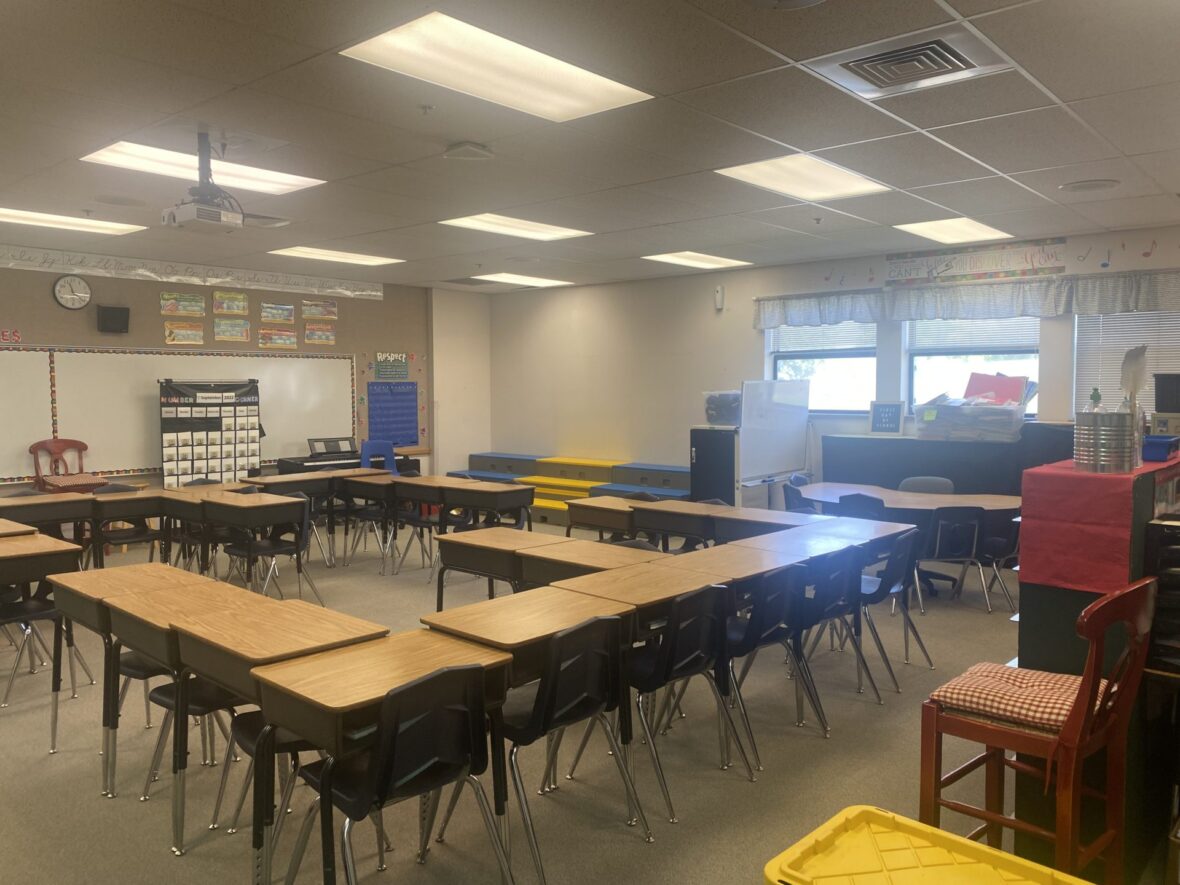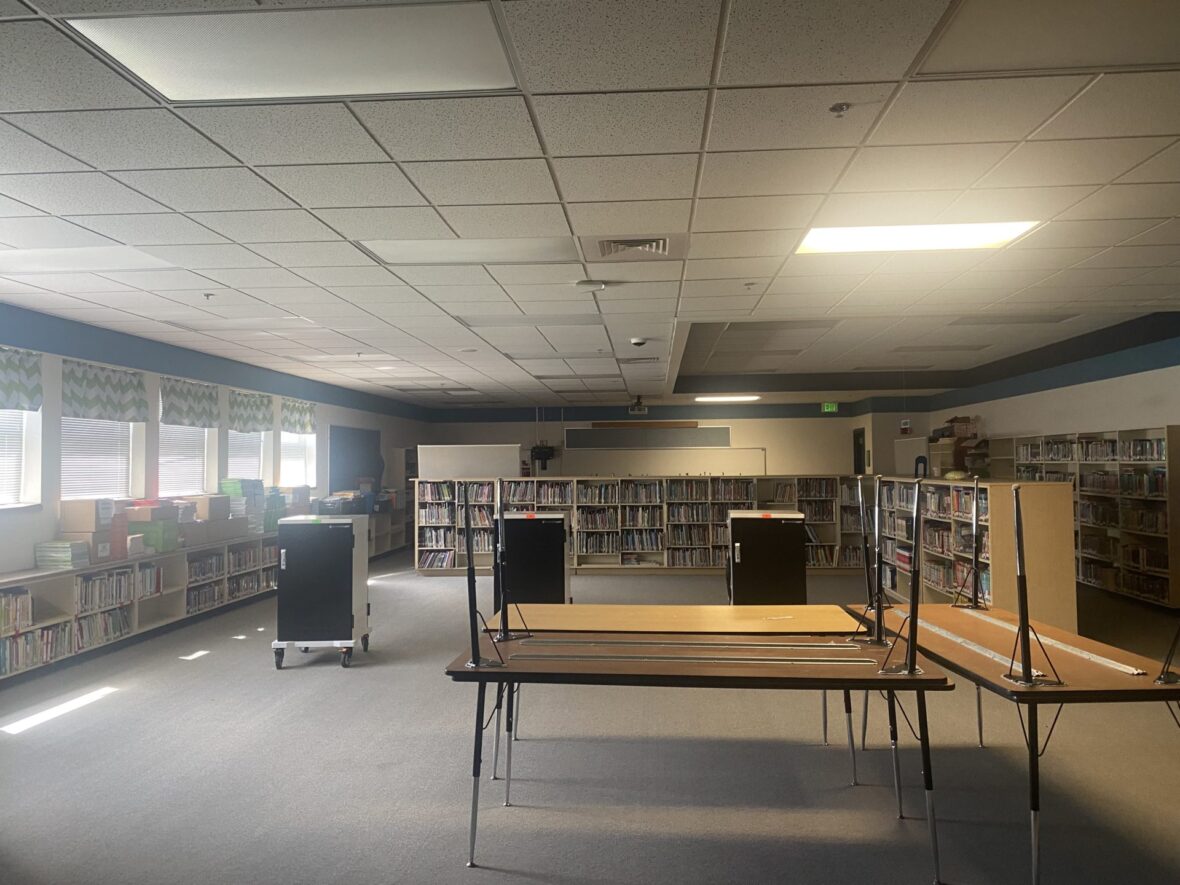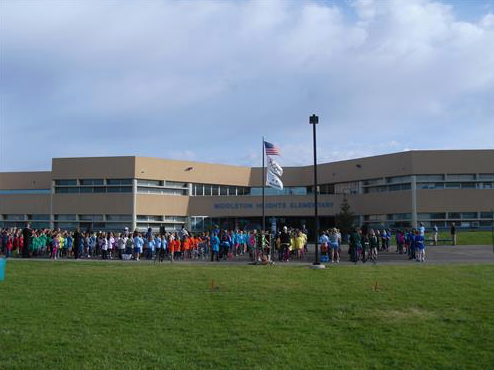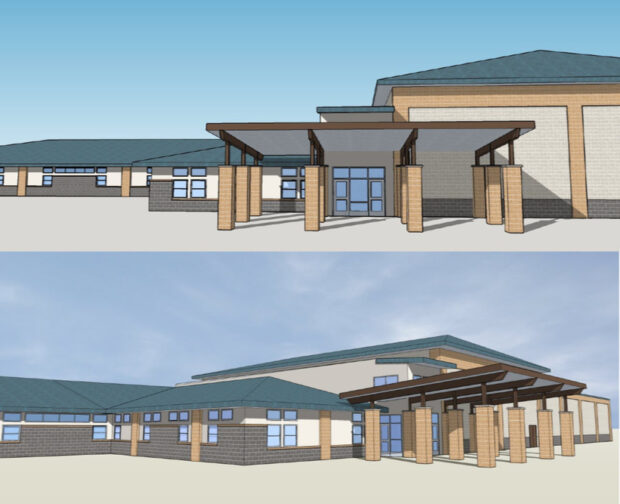MIDDLETON — When students enter Mill Creek Elementary School this fall, there’s no guarantee they’ll end up in a classroom.
The school is at 123% capacity, according to an April demographics study conducted by the district. Overcrowding fueled by local population growth has pushed administrators to use any available space for student learning.
Mill Creek’s lunchroom, staff lounge, hallways, music room, conference room, computer lab and individual office spaces will all be used as instructional space this school year.
The district hopes voters will solve the issue by approving a $59,435,000 school bond on Aug. 30 to build a new elementary school and two other projects, but similar efforts have failed in past elections, as voters weigh more taxes against the need for new schools.
But time may be running out, said Middleton superintendent Marc Gee, who worries that short-term solutions eventually won’t be enough.
Overcrowding isn’t new, but the school is hitting a limit
Mill Creek administration has converted all open areas into learning space over time, said the school’s principal Jessica Holman. It isn’t a new practice.
But this year, Holman added the music room and library to a long list of non-classroom spaces being used for instruction. When Gee asked the principal what space was not being used by students, she replied, “Nothing.”
“(The music teacher) will either push into classes or co-teach with PE, depending on what we can do,” said Holman. “Our librarian is going to reach out to teachers and pick out books and that’s how the students will check out their books. They’ll get an interest for the class and then she’ll pull books, put them on a cart, roll them in and that’s how they’ll get checked out.”


The library will simultaneously serve as a fifth-grade classroom and an art room. The music room is being converted into a classroom to hold 26 students. The computer lab was also converted into a classroom.
The staff conference room, located behind the front office, is regularly used for student testing. The teachers’ lounge is used for intervention, testing and the gifted and talented program. It’s open from 11:20 a.m. to 12:40 p.m. for teachers to eat lunch.
Counseling groups and fifth-grade focus groups meet in the lunchroom in the mornings and afternoons. Holman says leaders are considering using the gym for book fairs and conferences, as well as music and physical education classes. Even hallways are used for intervention.
The school also uses two portable classrooms, and expects another two to arrive in November, after supply chain issues prolonged delivery. But even with the extra square footage, Holman says the school isn’t gaining any ground.
“We’re not really gaining any space,” she said. “We’ll still instruct in the lounge, we’ll still instruct in the cafeteria, the computer lab, the other half of the library.”
Growth impacts the district, and it isn’t expected to slow down soon
Middleton’s most recent elementary school, Purple Sage, opened in 2003. Since then, the district has gained 514 elementary students for a total of 1,638 last school year.
Middleton is not expecting growth to slow.
The district contracted with Davis Demographics in 2021 to analyze Middleton’s demographic data in preparation for future plans. The Davis study projects an added 250 elementary students will join the district by fall 2028 — a 15.5% increase from 2022.

The growth isn’t just affecting Mill Creek. Heights, the second of three Middleton elementary schools, hit 127% capacity last spring, according to the study. Heights uses two portables, but cannot currently put any more on the property.
Heights principal Nicole Kristensen says staff has developed creative solutions, including using stairwells as intervention spaces.
Purple Sage, the third elementary, is under capacity, but the superintendent says that’s a deliberate decision. The district needs to keep class sizes small because the school is used for additional special education programs.
Middleton’s middle and high schools are between 80-85% capacity, while its alternative school sits at 91%.
The district will float a bond this fall
Middleton residents will vote on a bond issue on Aug. 30. The measure would go toward building a new elementary school with a 700-student capacity to absorb growth from Mill Creek and Heights. The school would be built on land the district already owns, located between the two elementary schools.
The bond would also go toward building a new career-technical education center and renovating Heights, which was built in 1987 and needs a new roof and modernizations to meet ADA requirements. The school will not gain any additional space through the measure.
Similar bonds failed once in 2015, and three times in 2018.

The new bond would be tied into Middleton’s high school bond payments. It includes a projected tax rate of $155 per $100,000 of taxable property, down from $225 per $100,000 in 2022. The bond would not increase Middleton residents’ current rate, but it would extend the length of time residents would pay by around 20 years.
The district projects individual payments to decrease over time with continued growth. As families move into Middleton, there will be more taxpayers to share the burden, which could reduce payments for everyone.
Gee says the district understands why families might not want to take on the bond, especially in light of high property assessments and gas prices. But he worries that waiting will only result in higher costs down the road. If the bond fails, the district will purchase two portables for a total of $500,000. The district leases the portables at $42,000 per year, per unit.
The district is focused on spreading information about the bond to voters. An information meeting will be held Aug. 10 at 6 p.m. at Mill Creek. Middleton residents can also invite district personnel to present at “cottage meetings” in their own homes, clubhouses or other smaller meeting places.
Idaho law requires a two-thirds supermajority of votes to pass a bond issue.
